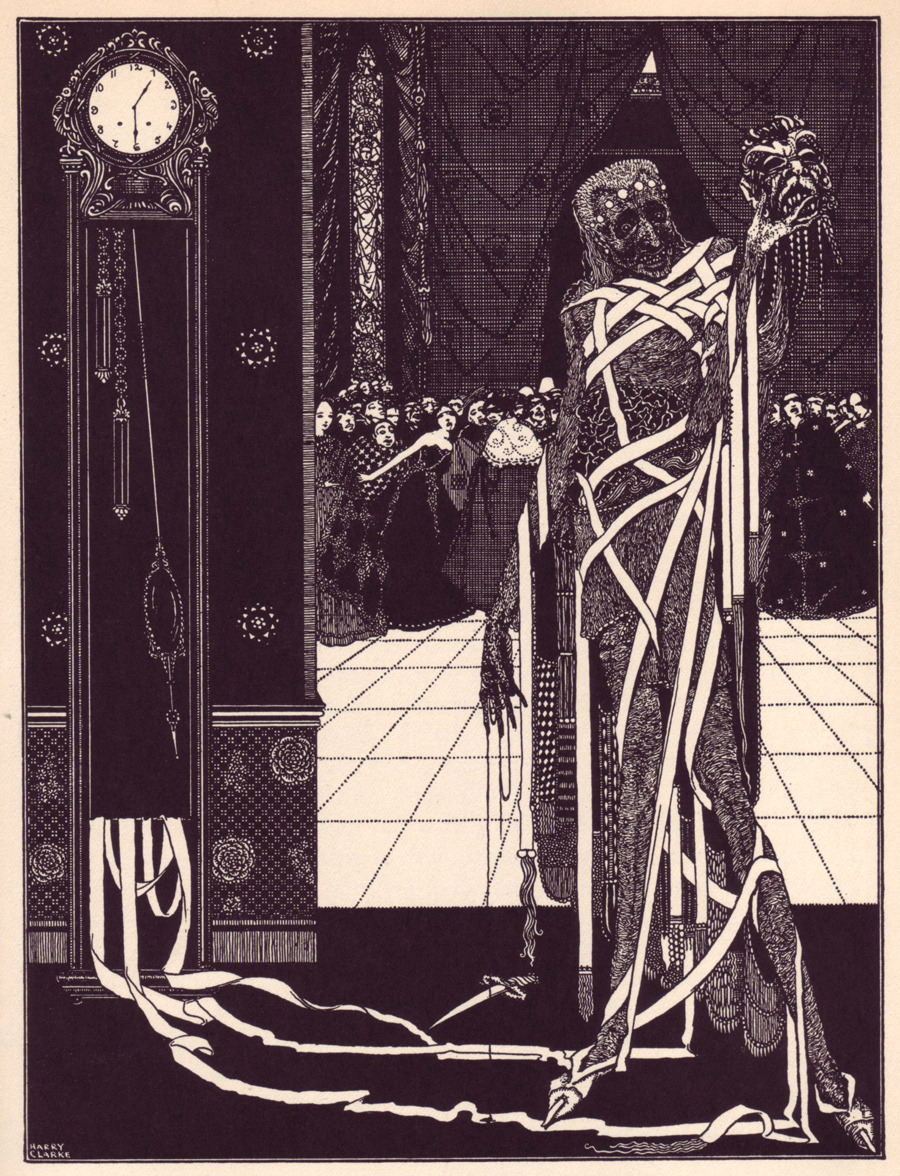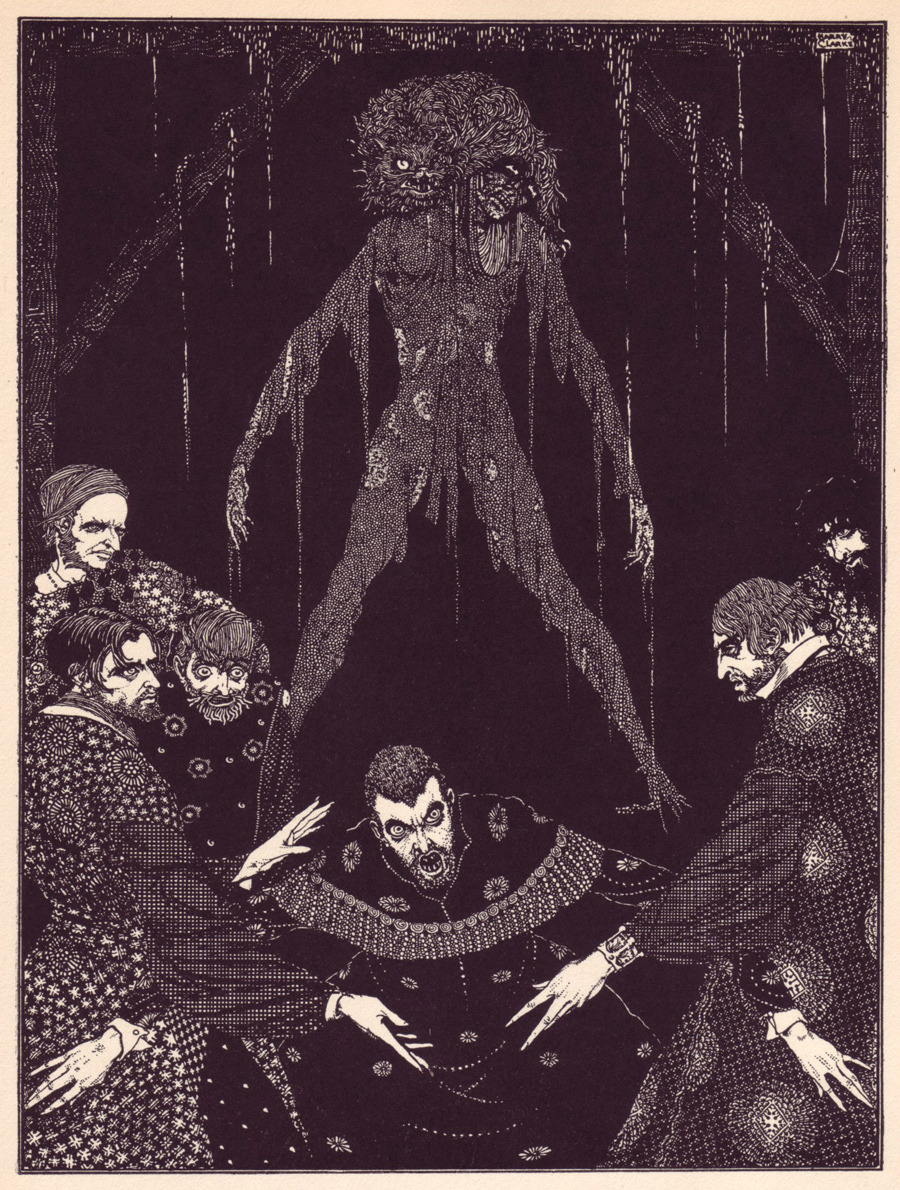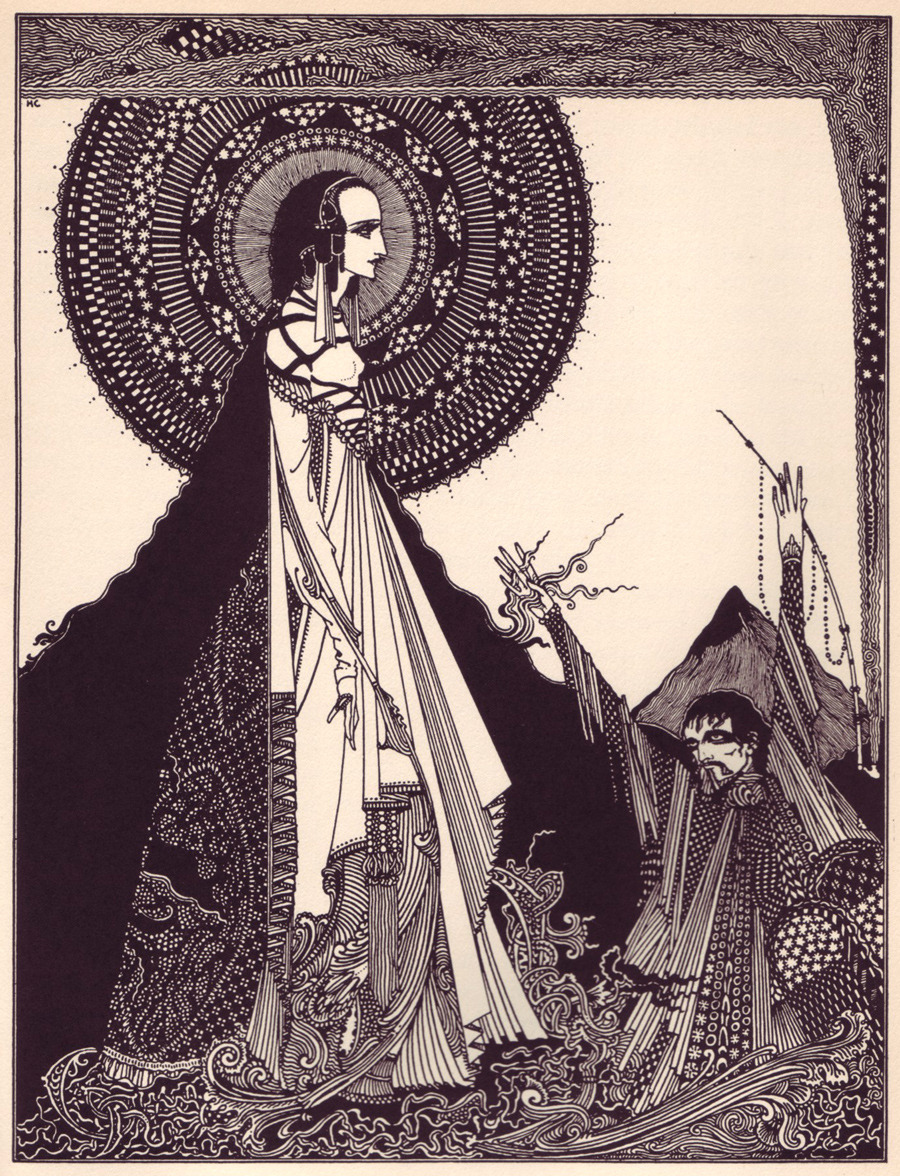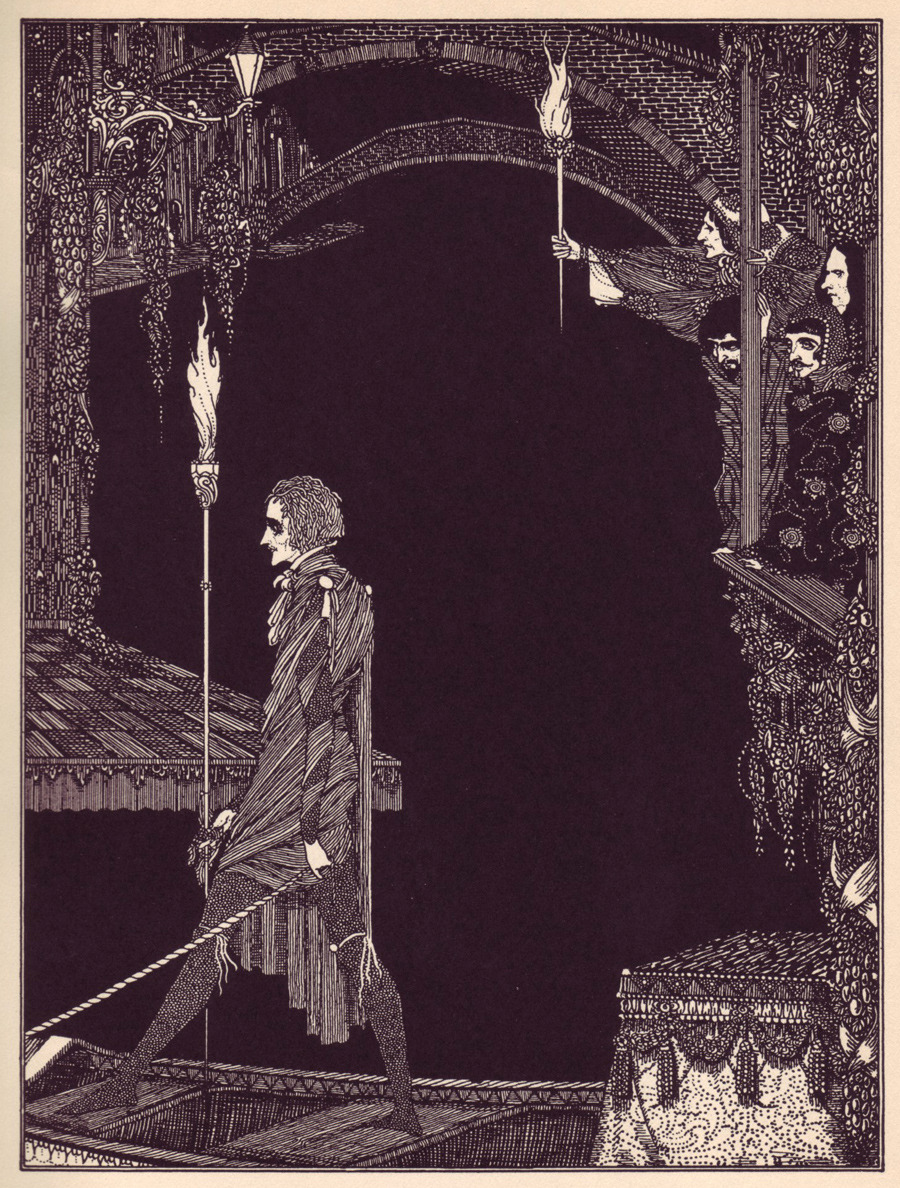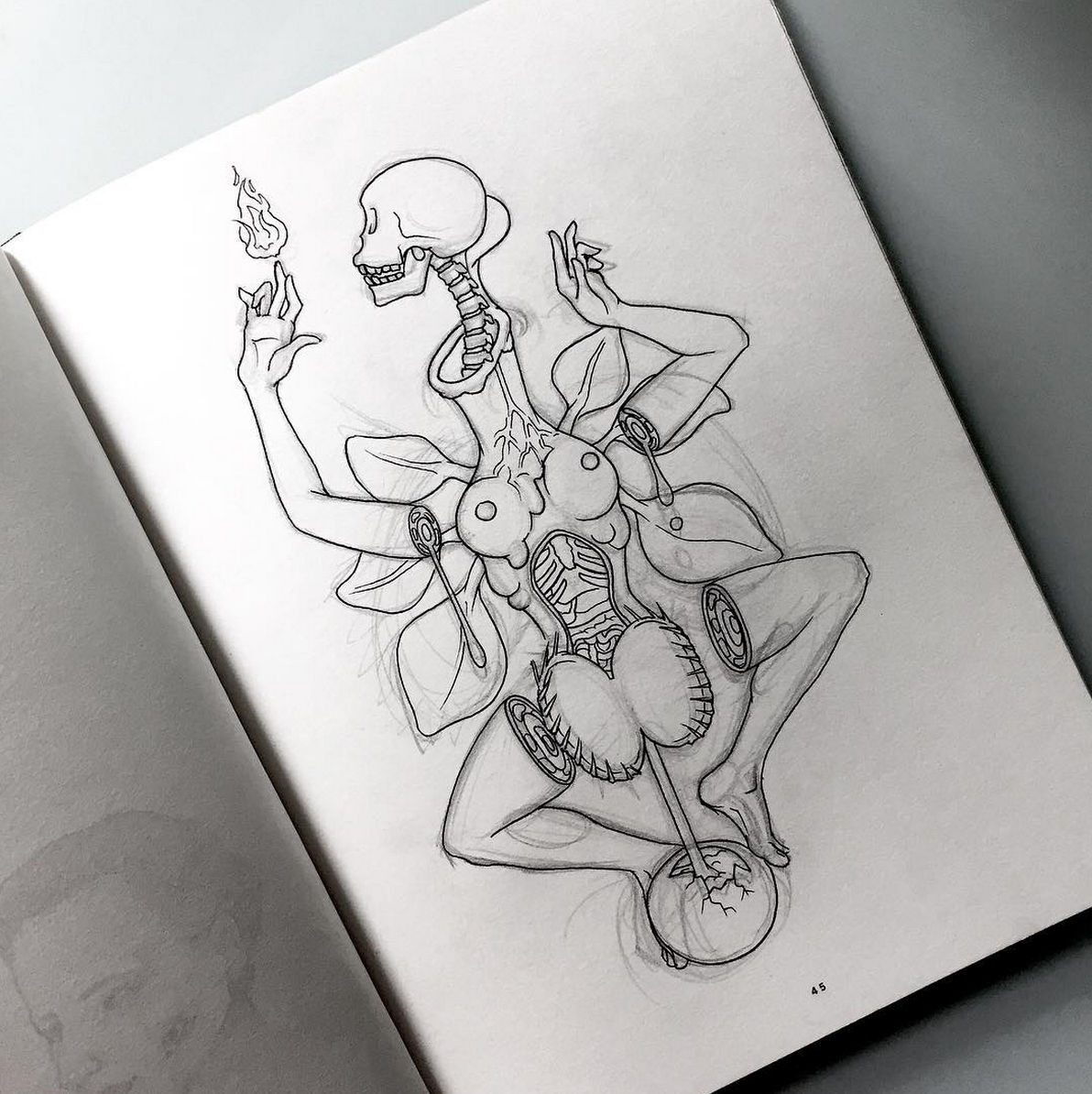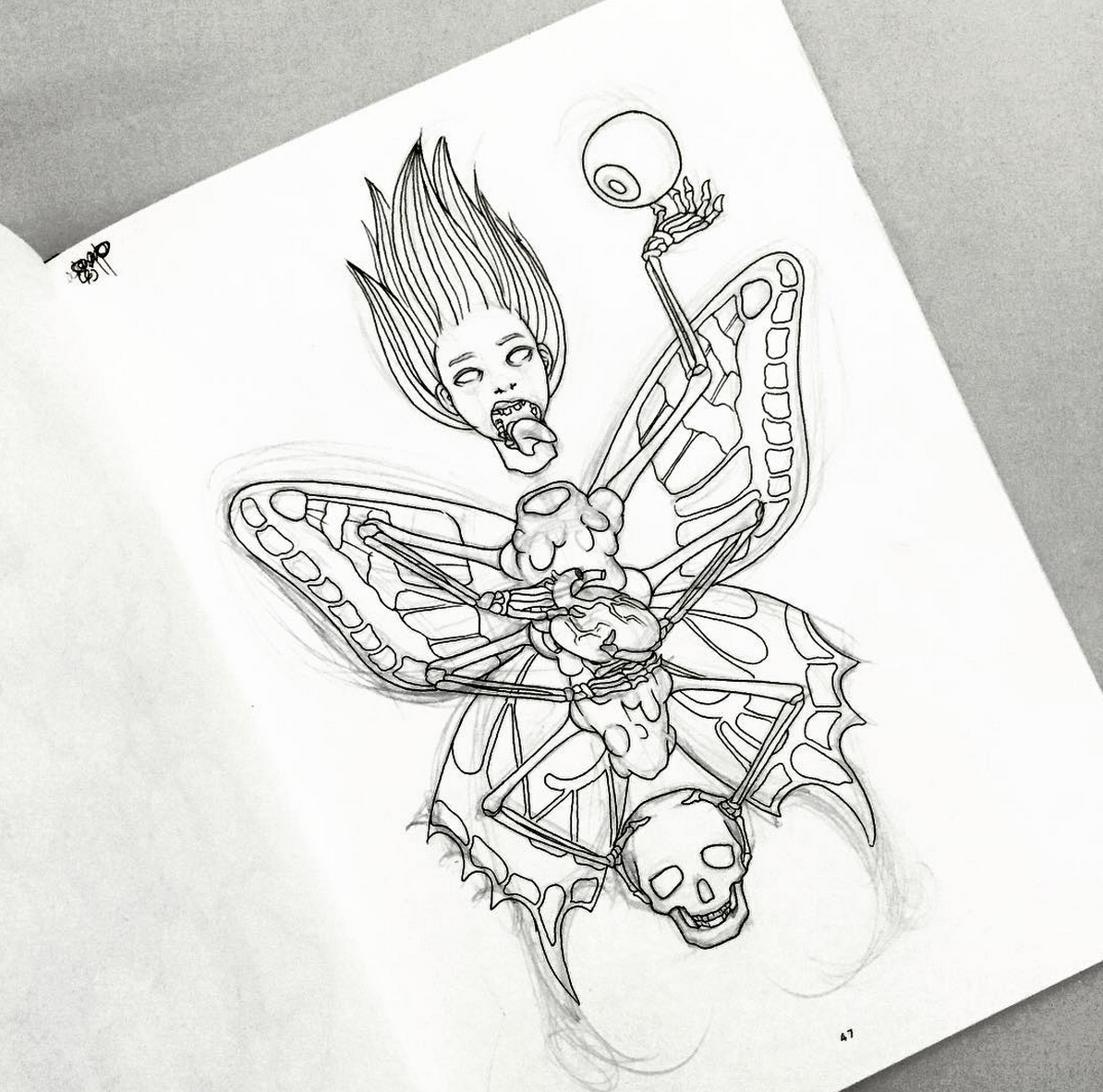I found this on Google images this morning and this is easily hands down THE BEST gorgon design I’ve seen in a long time. It’s really lazy and typical to draw a gorgon as a conventionally beautiful woman with snakes for hair and I don’t want to do that. This is great – threatening yet with a vestige of femininity that’s apparent enough to creep you out. This gorgon is phenomenal.
Tag: illustration
Harry Clarke’s Illustrations
Harry Clarke did these majestic illustrations for Poe’s tales. I’ve seen them before but I forgot to post them up until recently. His work looks a lot like Beardsley’s and there’s no doubt that there was influence there! Find the rest here: http://50watts.com/Harry-Clarke-Illustrations-for-E-A-Poe
Crowley’s Thoth Deck + Janus Deck thoughts
Astrid left a comment for me linking to Aleister Crowley’s Thoth deck as well as a 45-minute documentary on Crowley himself. I’m about to give that a watch, and I really love the insane symbolism going on in the Thoth deck (even though I don’t really understand most of it as yet). My favourite is still the Rider Waite and the dry wit of the Fantod Pack has so much lovely personality, but this complements my research quite well and might lead me to some new ideas about how to go about working out the mechanics of my own deck.
My ennui seems to be an ongoing thematic concern (I mean, I get flashes of terrible anxiety about FYP even in the minutes after waking up – this morning I was lying in bed and suddenly felt overcome with the urge to breathe into a bag and run around and scream in panic) so maybe this deck will clarify things for me. Making always calms me down.
Here’s my idea so far:
The Janus Deck
Janus is the Roman god of beginnings and doors. Everything begins with a beginning, and mythology finds its way into everything. Janus is said to be the god you invoke in order to invoke other deities, and it makes sense to me to anchor this deck with his image. The deck could work as a gateway to ideas, resolutions and narratives, and will use imagery from Greek mythology (it seems oddly disjunctive to anchor this subject with a Roman deity), which lets me draw grotesque monsters and allow me to put my own spin on existing rich content.
Scylla and Charybdis diorama
I made this in one day, so that should reassure me of the speed of my work and remind me that I don’t have to panic and that I can do anything. It’s about the size of an A6 sheet, working smaller because it’s just a draft. I’m thinking of incorporating dioramas into my bookmaking process, along with fortune telling and the grotesque as a medium to convey monsters like Scylla and Medusa. I have yet to flesh this out properly but it feels like all the pieces are slowly, slowly coming together, even if I can’t tell how that will happen.
The Lenormand Oracle
I was looking at different kinds of fortune telling decks after reading Italo Calvino’s The Castle of Crossed Destinies (in which characters tell their stories to each other using only tarot cards, and the audience hypothesizes what happened based on the meanings/imageries of each card and where it’s placed relative to other cards). I’m looking at Greek mythology again and thinking of making my own version of a fortune deck, inspired by the Fantod Pack. I’m not sure whether to turn it into a game as yet but I’m collecting card images and ideas that I like just in case it leads me somewhere. I’m still trying to find a concrete message to convey in my work.
I don’t quite understand the Lenormand deck the way I understand the traditional tarot (I have the Rider Waite deck at home). I love well-crafted card decks and anchoring my card images in mythology would save me from having to build a whole new universe of images. Greek mythology is full of grotesques (for example, all the women who were metamorphosed into monsters) so none of my previous work is wasted, exactly.
B suggested that my card deck could lead people into the grotesque, and in doing so reflect their own self-denial in a way that can be understood (drawing influence from my readings on Bakhtin and Kayser). I’m wondering if there’s a way to extrapolate meaning from Greek mythology in a way unique to me. I remember reading that Greek mythology makes up so much ground of the human psyche in Western thought – if you look at Freudian psychology, some of his theories are named after Greek myths (i.e. the Oedipus complex). I guess this is a better starting point.
Niche feelings
The Art of Alex Pardee
I borrowed Awful/Resilient: The Art of Alex Pardee from the ADM library last week and went through it on the train with the uncles and aunties beside me looking quite confused by the fact that I found these illustrations so enchanting.
This is Pardee’s Digested Children series, which is really amazing in terms of how the body form is distorted and how even despite the monstrous subject matter my mum still maintained that these were kind of cute (due to the vibrant colours). I love the creativity of his nightmare creatures and how the scale is represented through the children trapped within their bodies.
I’m thinking of experimenting with this kind of colouring style as well, and drawing larger format images so that I can incorporate more details into the forms of the creatures I create.
I love the contrast between the ‘cute’ elements and the grotesque elements in his work. I think this exemplifies the aesthetic of ero guro nansensu in some ways – there’s a clash of elements and perhaps even a clash in terms of the viewer response to the work.
Illustration 2.0
I’ve been struggling with my project recently (I think I locked myself too far into The Resurrectionist) and with the idea that my drawings are too pretty to be grotesque. I know that sounds rather self-aggrandizing, but it’s a bit of a problem if your working title is Case Studies of The Grotesque.
I went ahead and drew as I usually do, incorporating all the odd images from the grimoires/pseudo-encyclopedias that I’ve been researching recently. I decided that perhaps my original ideas and themes still hold – it’s just that I need to find a new vessel for them that can grow along with my illustrations.
This came from all the ero guro I’ve been looking at as well as all the strange plant hybrids in the Voynich manuscript and the Codex Seraphinianus.
This came from some of the horror game artbooks that I’ve dug out for inspiration on grotesque/body horror/insanity.
It’s hard to say how my project is developing now, but I’m going to have myself a research session in the HSS/ADM library tomorrow (there are some books I need to look for) to beef up on theory.
Weekly wrap-up
After running through my presentation in class on Friday, a few salient points:
- My work is looking beautiful, but not quite grotesque. I’m glad that I’m not having much trouble hitting the beauty aspect of things but the grotesque is a theme that resonates with me, so I need to push myself more for this.
- Synonyms for grotesque: strange, absurd, bizarre, monstrous, abnormal, uncanny, freakish, incongruous, weird, eerie, fantastic, ludicrous, aberrant
- It might be useful to look at the illustration style of The Nuremburg Chronicle – Astrid recommended looking at the colour palette as well as the strange people with odd body augmentations. (The Nuremburg Chronicle is an illustrated history of the world with references to biblical lore.) I’ve included some of the images here.
My action plan for the next week or so is something like this:
- Restructure my FYP Report outline to include all of the new references I’ve been looking at
- Gouache paintings on wood to try and evoke the sensibility of all the vintage references I’ve collected
- Continue building my story
Grimoire illustrations
I really, really did not want to comb through the PDF of The Munich Manual of Demonic Magic that I found online (the pages looked… used, as if someone actually used the grimoire for nefarious purposes) and decided to look for illustrations instead corresponding to the kind of grotesque/strange aesthetic I’ve been trying to achieve over the past weeks. I got a bit too creeped out knowing that some (obviously foolish and mad) individuals have tried using the Munich Manual to summon demons that they (obviously) can’t control. I actually have a book on my shelf teaching you to summon demons and cautioning you not to do it. I keep it as a novelty item.
Weird magic superstitions aside, most of these images seem to come from the Dictionnaire Infernal. They are all representations of the demons in the hierarchy that corresponds to Roman Catholic theology, and some of them have made their way into popular culture today and have been adapted into graphic novel characters (Mike Carey’s Lucifer and the new series The Wicked + The Divine).
I’m referring to these not because I have some latent interest in becoming a demonologist (I’m a wimp, I don’t even want to play horror video games…) but because I’m still struggling with the notion of the grotesque. I may have a strong stomach for stuff like ero guro but that thing with multiple legs is quite honestly creepy.

